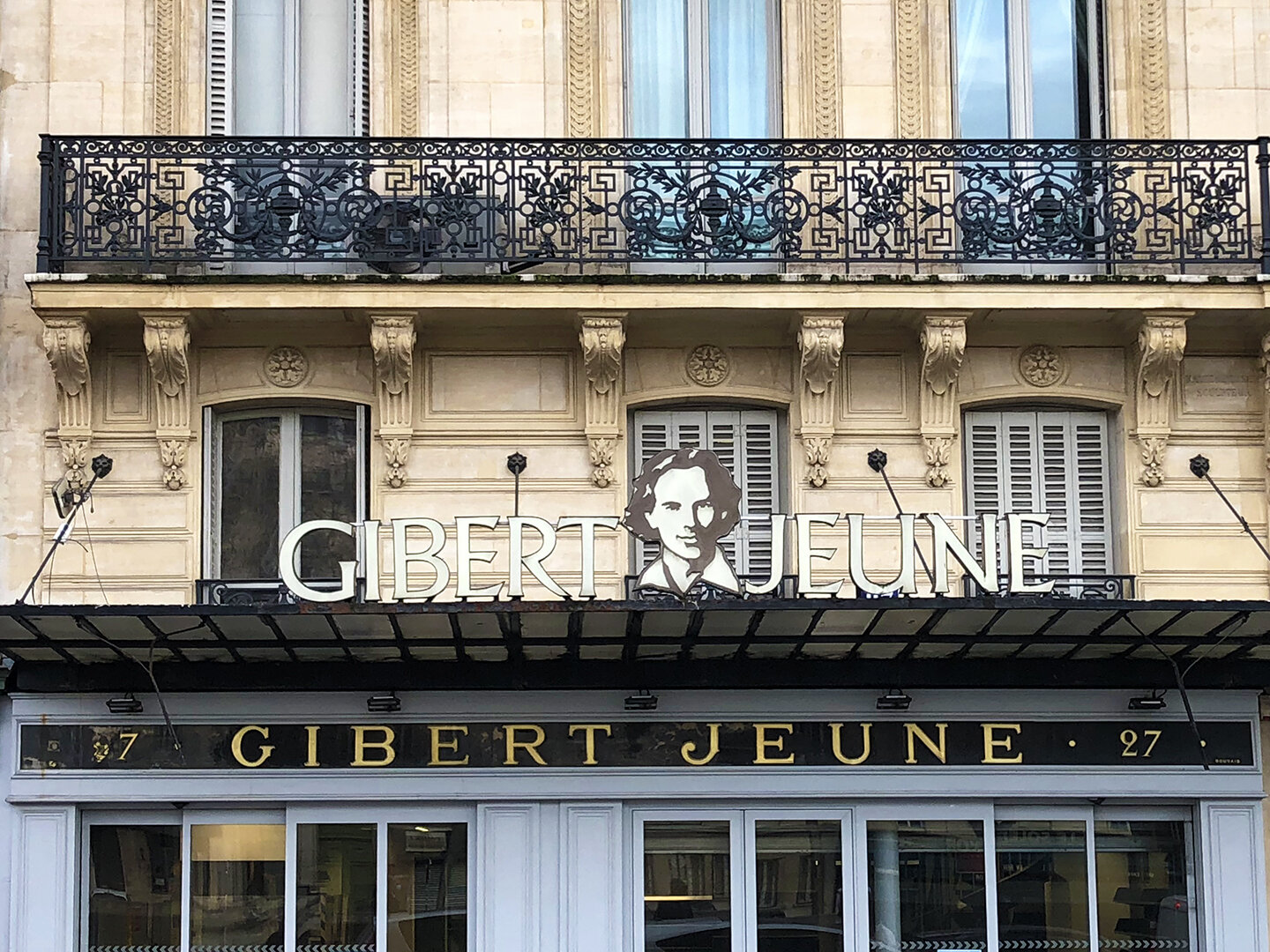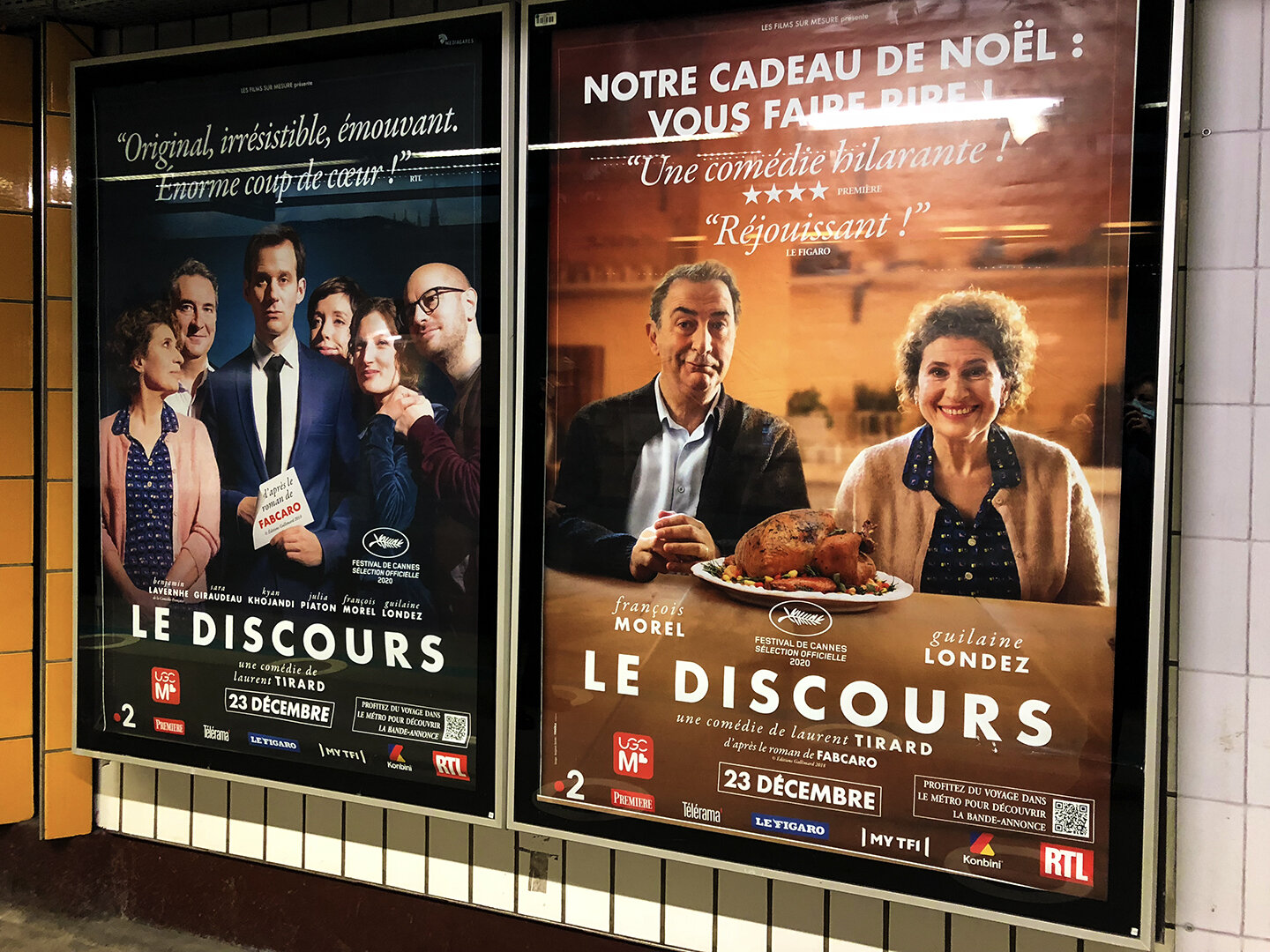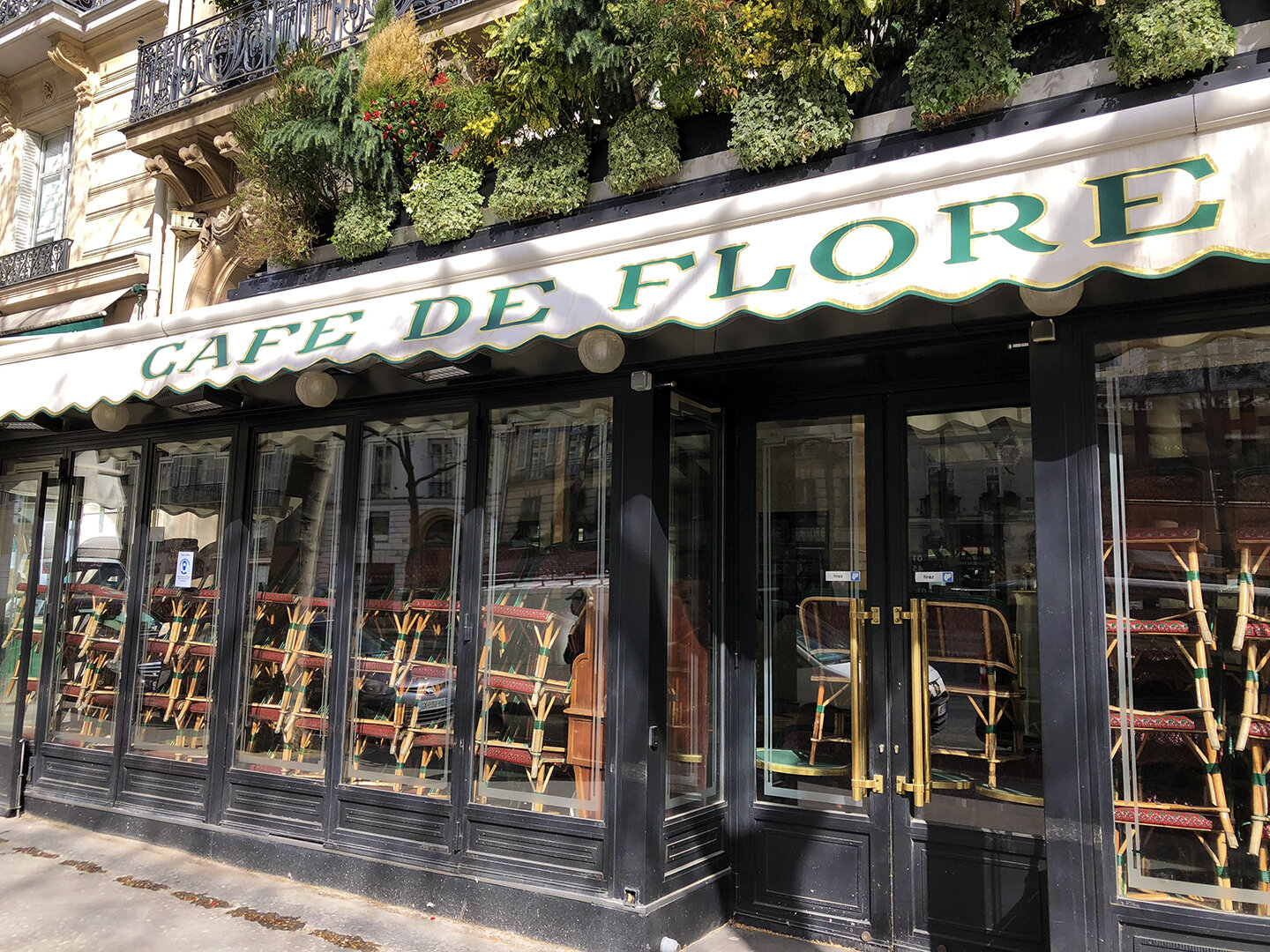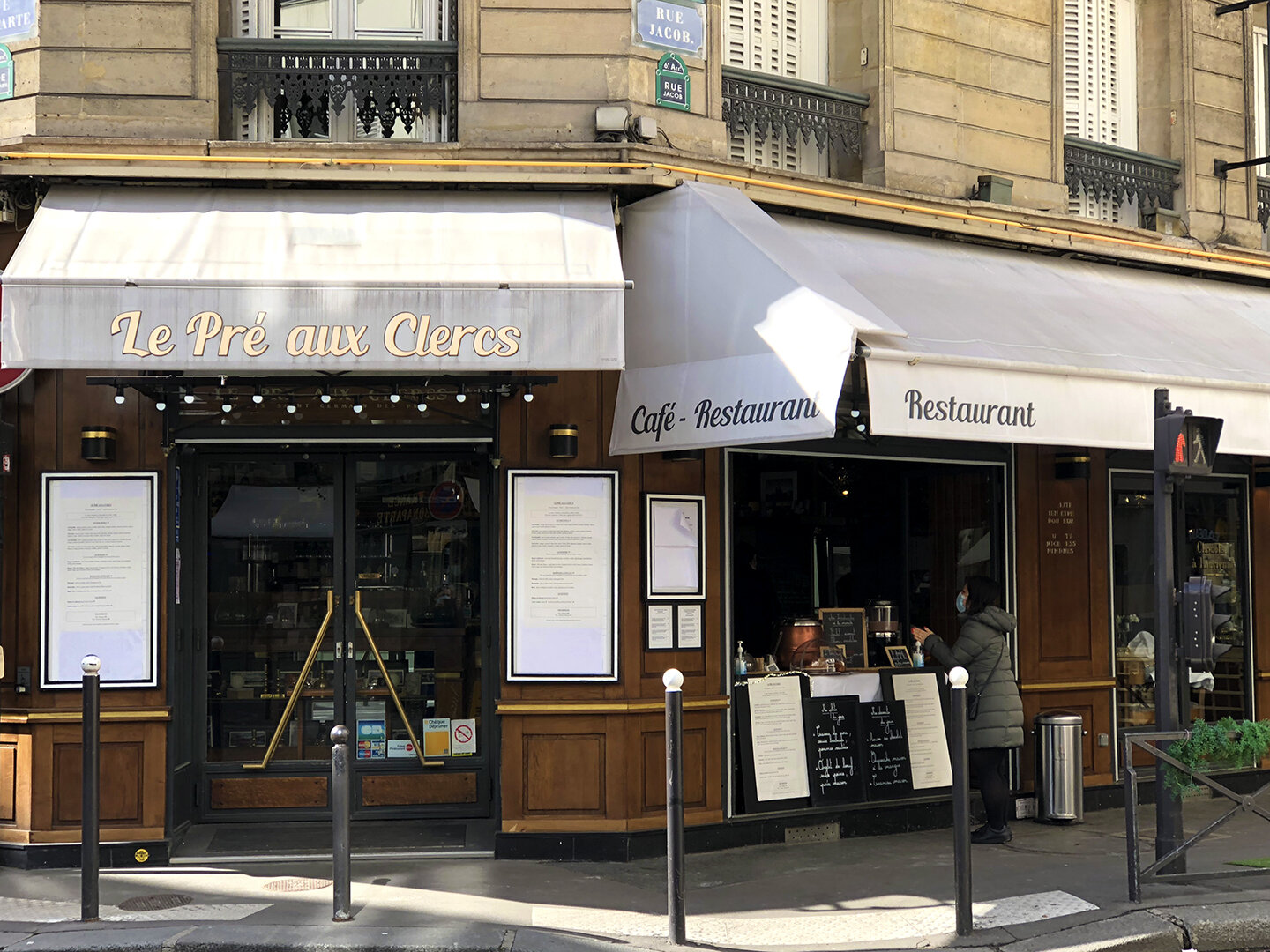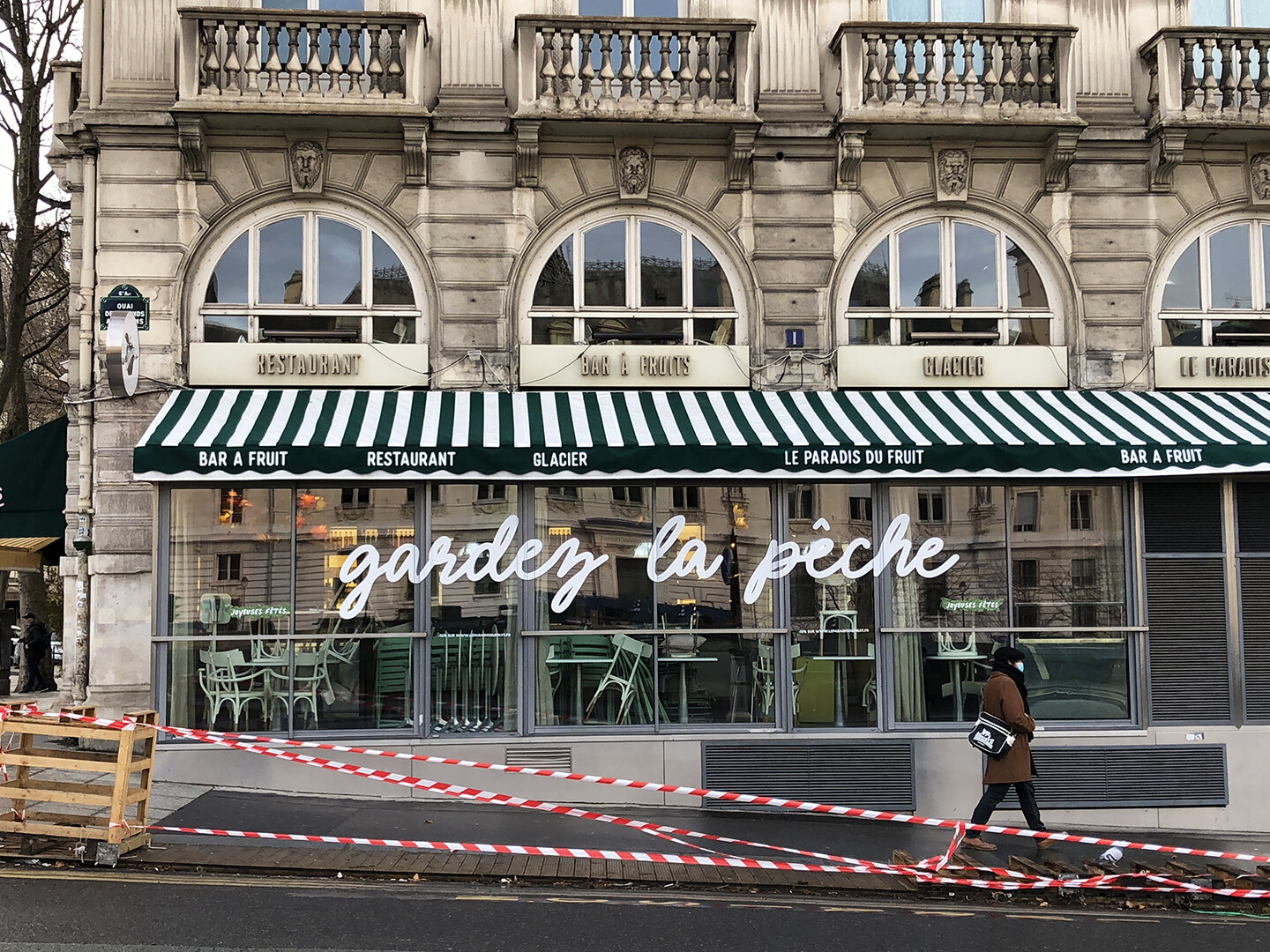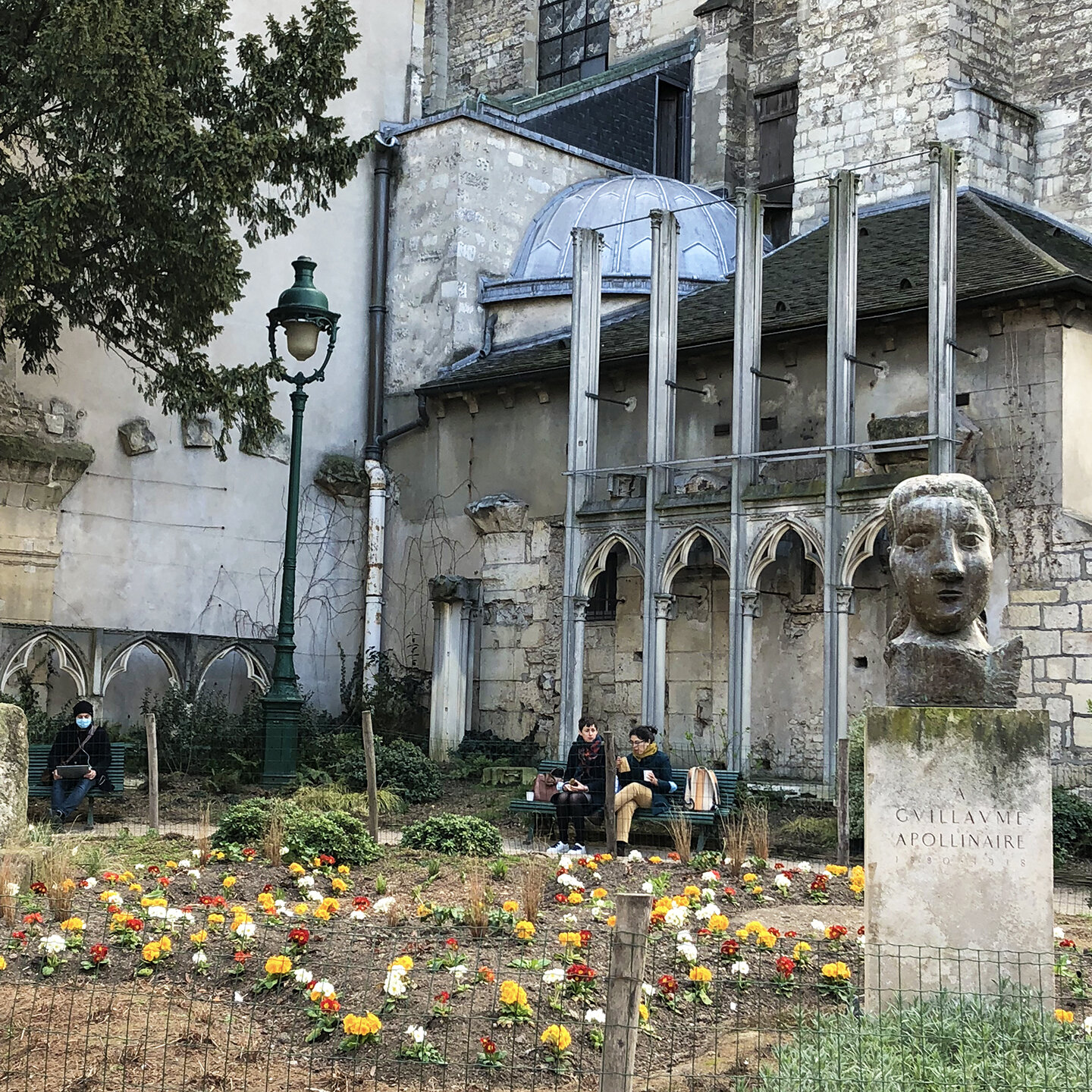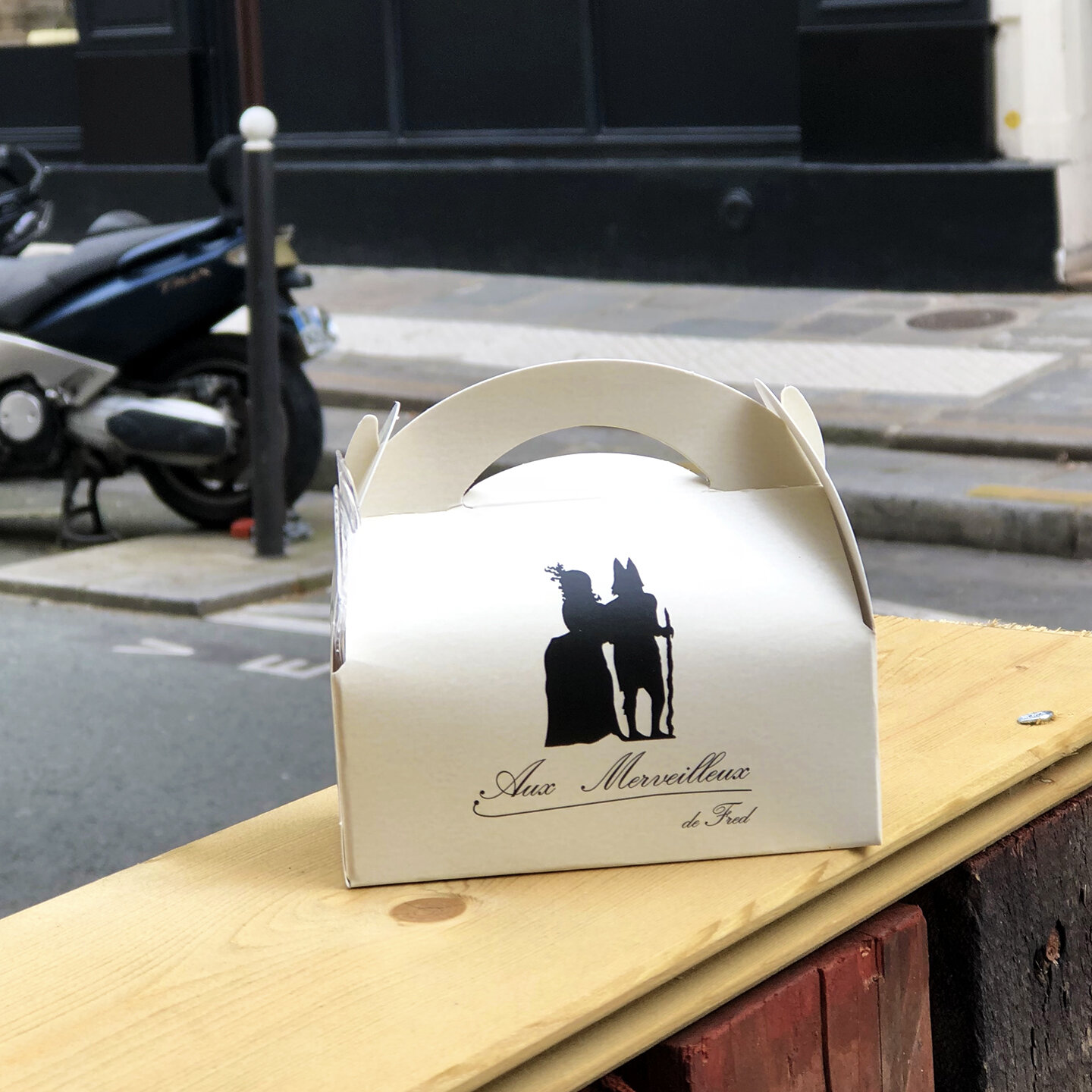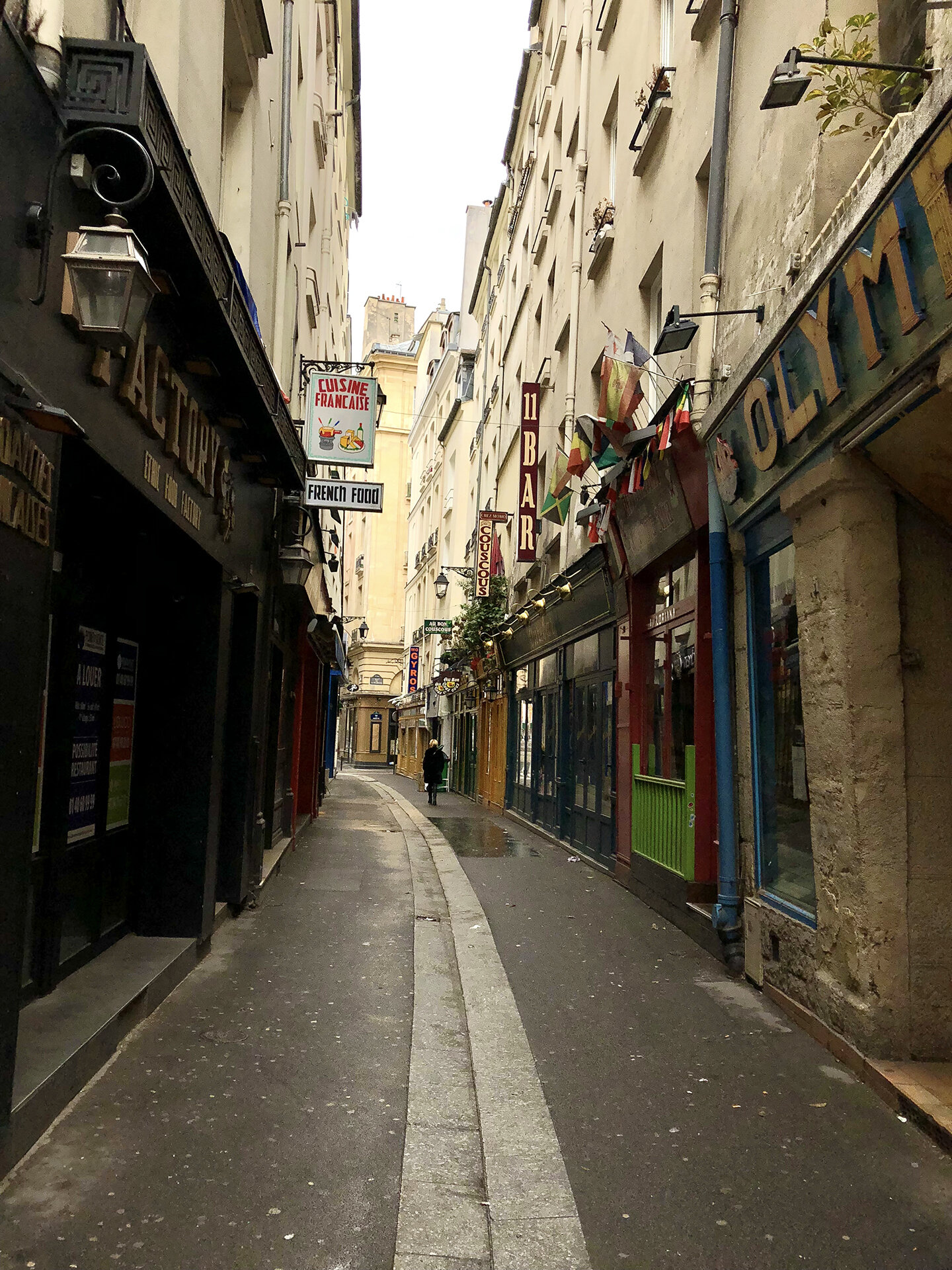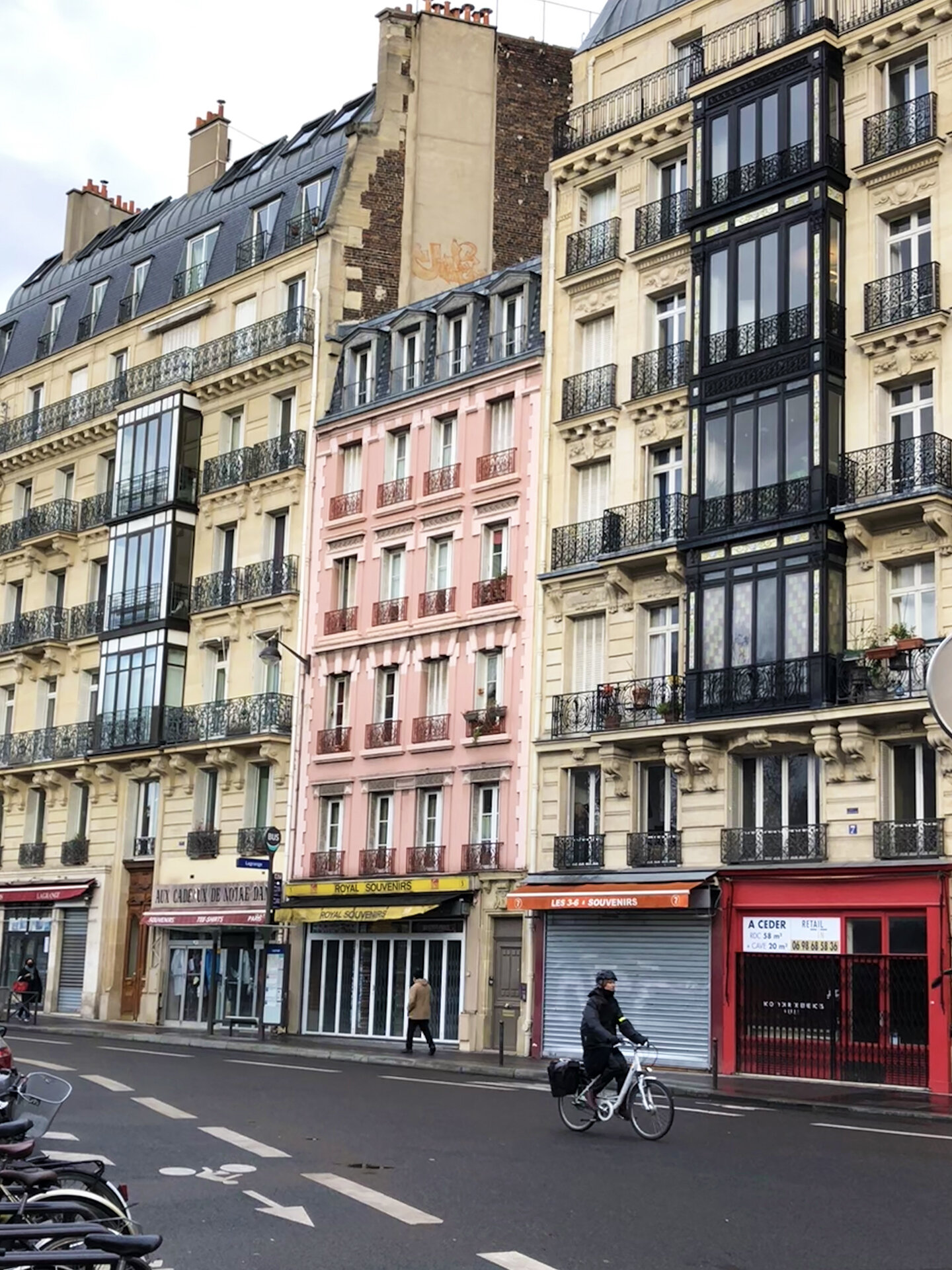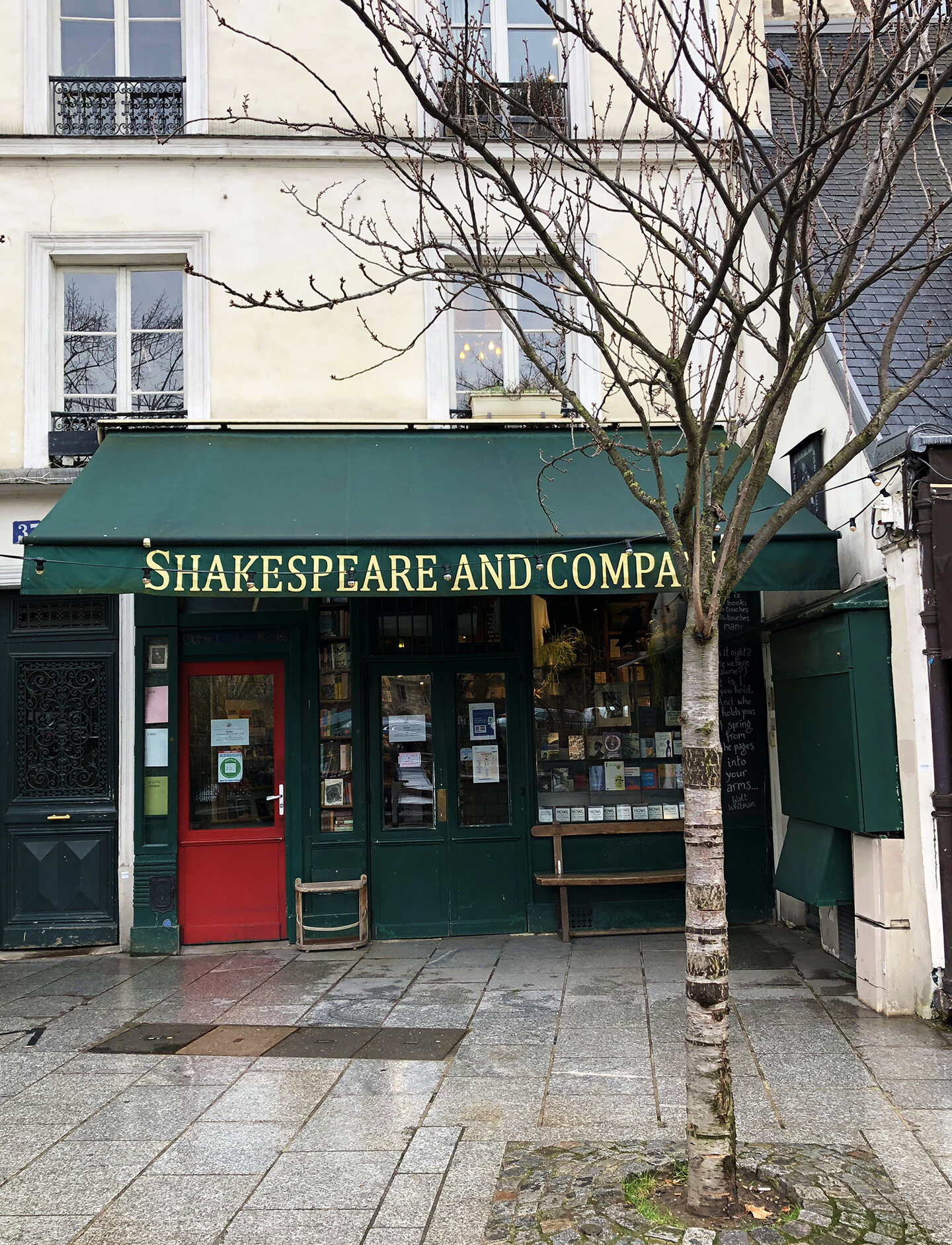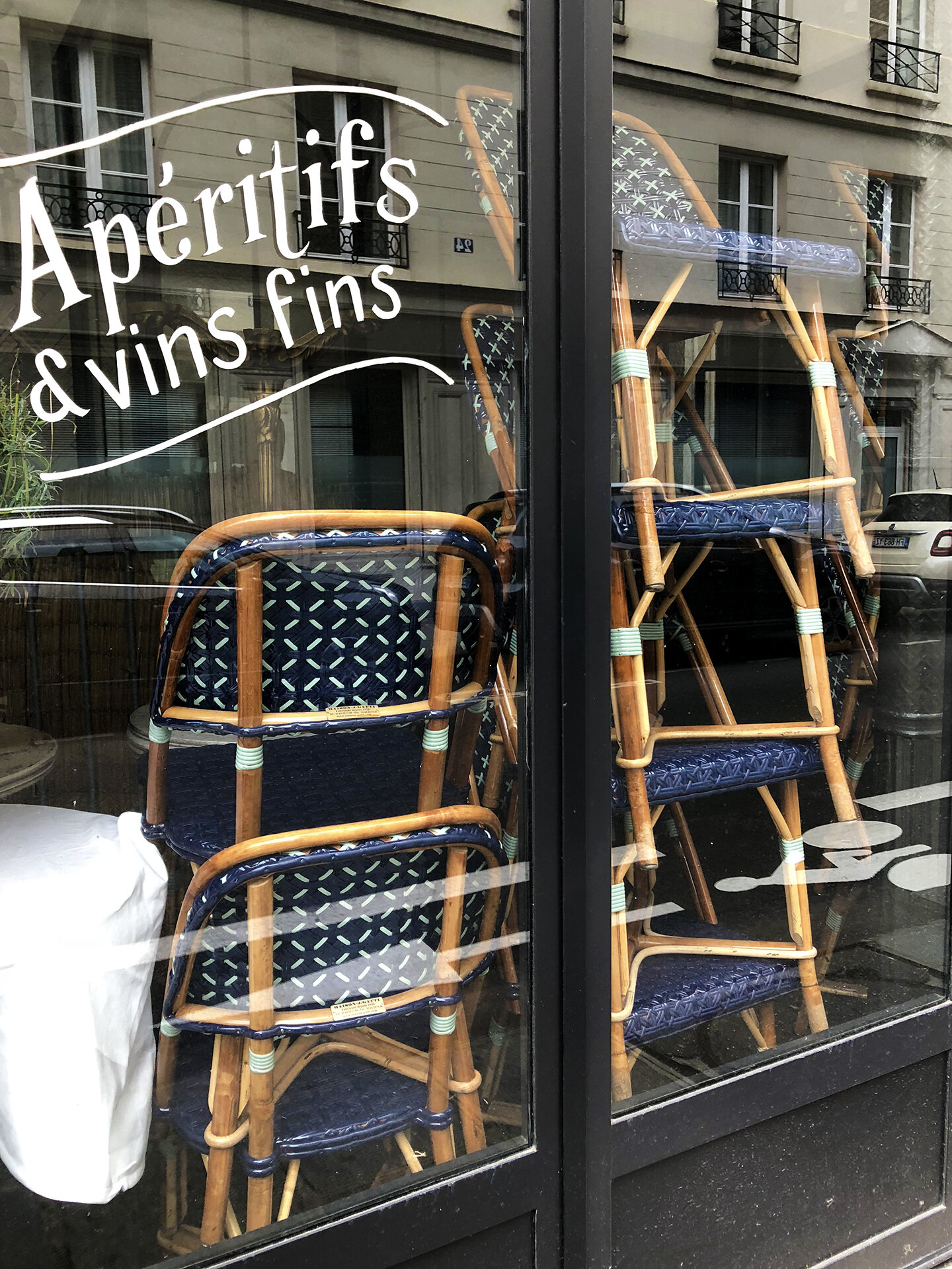The trip had been postponed for a year. Despite living in France, I hadn’t set foot in Paris since September 2019. I knew that museums would be closed; cafés and restaurants would not welcome patrons; a 6 pm curfew would still be in place. We decided to go anyway and make the most of it. It was Rick’s birthday after all and it would be a nice change of scenery. The fact that I had been away from Paris for (what seemed to be) an eternity was putting me in a unique position: it would be easier to notice how the city had changed since its pre-pandemic days.
We arrived at Gare d’Austerlitz on a Tuesday at 5:30 pm which qualified as “peak hour” since the curfew started half-an-hour later. I expected platforms and trains to be packed but I was wrong. With no lines at the ticket machines and very few commuters pacing the RER and métro corridors, it felt more like a quiet Sunday morning in Paris before the young set heads out pour bruncher and the 40-years-old carry bouquets on their way to have lunch at their parents’.
Métro-RER corridor between Saint-Michel and Cluny-La Sorbonne
I know this doesn’t quite jive with what is typically shown in news reports but we never encountered crowds in public transportation during our 5-day stay. Call me crazy but I purposely went through the Châtelet-Les Halles interchange for no other reason but to see how crowded it was. I’ll let you judge for yourselves: here is a time-lapse video where you can (almost) count every commuter using the people movers.
Most of the time, we seemed to be stuck in a time warp: the walls were still plastered with affiches advertising winter vacations in sunny locations or movies and plays that briefly opened last Fall before the second confinement began. Many of the paper posters were tattered, signaling that advertisers had pretty much paused any campaign they had planned since the 4th quarter.
“Our Christmas gift to you: to make you laugh!” Are we laughing yet?
As expected, the closure of cafés and restaurants is the most glaring evidence of the pandemic; probably because they’re huge social hubs, day or night.
No onion soup for me today! To think that Au Pied de Cochon had been open around the clock, every single day, since 1947…
Au Père Louis on rue de Vaugirard. Even outdoor service is not allowed.
Sad sight at Café de Flore.
Some, like Les Deux Magots, “pretend” to serve customers.
Les Nounours des Gobelins do get around! Lucky bears…
Many of the smaller eateries shifted to the vente à emporter model, either click-and-collect or delivery by UberEats, Deliveroo, etc.
Le Pré aux Clers offers vin chaud, soups, and to-go meals.
Clearly, restaurants have no idea when they might resume operations.
“Nous rouvrirons à l’automne.” Polidor was using the Spring confinement to do some remodeling, expecting to reopen in the Fall. They’re still remodeling.
A café at marché Saint-Germain is not making any time commitment: dès que possible…
The “fruit bar” on quai des Grands Augustins has an injunction for all: stay fired up!
Not being able to sit down at a café for lunch means that more French people eat while they walk (the horror!) or look for a bench in public parks.
No seats left in square Laurent Prache.
Front row seating on place Saint-Germain.
Window seating at Palais Royal.
I purchased a couple of Merveilleux on rue du Pont Louis-Philippe and we ate them right on the street, using the top of a shipping pallet as a table.
Undoubtedly, the pallet had been used to build a parklet in front of the now-closed restaurant.
Let me tell you, it’s hard to spend six-to-eight solid hours on your feet without the possibility of seating down in front of an espresso or a glass of wine! And it’s a bit tricky to depend on public toilets since cafés and department stores are closed. Whatever you do, do not leave home without loading the (free) Toilet Finder app on your phone: truly a life-saver.
Public restroom on rue du Four. All toilets are automatically cleaned after each user and have hand-sanitizer dispensers on the outside.
Speaking of urban furniture… The Wallace fountains work very well, most of the Morris columns advertise plays that theaters can’t show, and it looks like the old newspaper kiosks have all been replaced with their “new-and-improved” models.
Sign of the times at the kiosks: few postcards, many masks.
Many other sites are in “sleeping beauty” mode.
Like all movie theaters, the UGC Danton only showed a few films in Summer-early Fall before having to shut down again.
Notre-Dame will not wake up for several years but the work continues. All the melted scaffolding was removed. Engineers and artisans continue to consolidate walls. There is still debris to evacuate inside the cathedral before restoration and rebuilding can start.
The bouquinistes’ lockers didn’t see any daylight while we were there but perhaps they feared rain showers. On the other hand, many of them heavily rely on the tourist trade.
Car traffic has gone down noticeably: nowadays, you are more likely to get run over by a vélo than a voiture. Even the Seine seems to be taking a break. There are no Bateaux-mouches or Vedettes du Pont-Neuf on the water. Even the Batobus service was suspended at the end of September. They hope to resume service in April (dream on…) The only boats we saw were houseboats moored on the banks and merchandise barges carrying wood, sand, or construction debris.
Esperanza on the Seine.
After staying on the Right Bank for many years, I had booked a hotel in the Latin Quarter for this trip. It was “my” Paris when I was a student in the late 70s-early 80s but the neighborhood had changed a lot over the past 40 years. The rectangle defined by boulevards Saint-Michel, Saint-Germain, Saint-Jacques, and quai Saint-Michel used to be an exciting and culturally vibrant area before the fast-food outlets, kebab joints, overpriced cafés, and souvenir shops turned it into a tourist mecca. It truly had become a zoo.
This time was very, very different. Foreign tourists had no choice but to stay home, and so did most French students after remote-learning became the norm. It was a ghost town. Many of you are quite familiar with that neighborhood and I think you will be shocked when you take this little stroll with me.
An eerily quiet rue de la Huchette. Rue de la Harpe wasn’t any livelier.
Curtain down at Théâtre de la Huchette. Ionesco’s La Cantatrice Chauve and La Leçon had been playing there since 1957, the longest running show without interruption at a single theater.
Le Caveau de la Huchette also went dark. After the Liberation of Paris, its caves welcomed jazz greats like Sidney Bechet and Claude Luter. Until the pandemic, it was open every single night.
“Souvenirs row” across square Viviani, on rue Lagrange. Speechless.
The bookstore was open but when was the last time you could take a pic of Shakespeare and Company without an American tourist photobombing your shot?
Last days at Gibert Jeune, an institution for more than a century. For any former Latin Quarter student, this feels like the end of an era. All four stores around place Saint-Michel are closing forever.
So, yes, Paris feels like a different city at the moment. During the first confinement, mesmerizing photos highlighted the beauty of an empty city. They felt strangely peaceful; time was suspended. My photographs tell a different story; they show a city that’s wounded and is barely convalescing; but it’s also reinventing itself. There is some gloom and some sadness but there is resilience as well. And the beauty is still out there for everyone to see. That’s what I’ll show you in my next post…
Coming soon to a café near you: Gatti chairs and an aperitif en terrace. Can’t wait!
Vocabulary
Au ralenti: in slow motion
Pour bruncher: to have brunch
L’affiche: (f) poster
La vente à emporter: take-out
Vin chaud: (hot) mulled wine
Dès que possible: as soon as possible
Gardez la pêche: lit. keep the peach; remain upbeat
Le vélo: bicycle
La voiture: car

